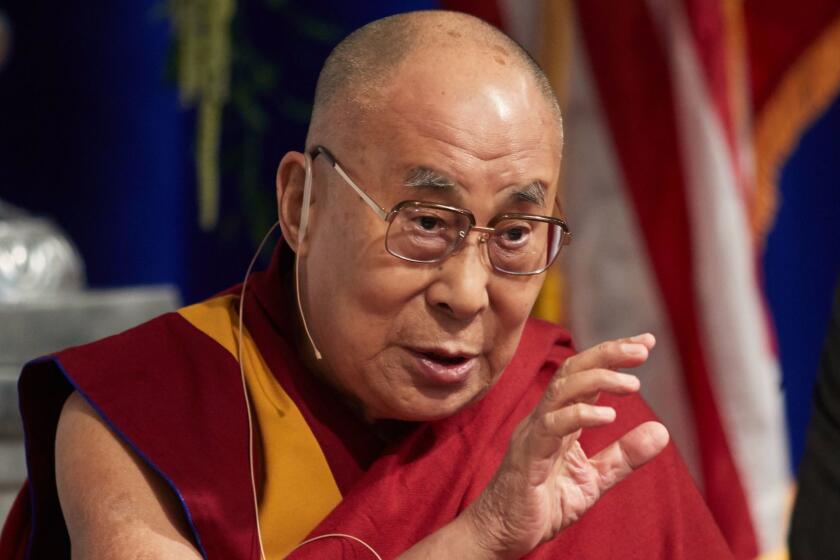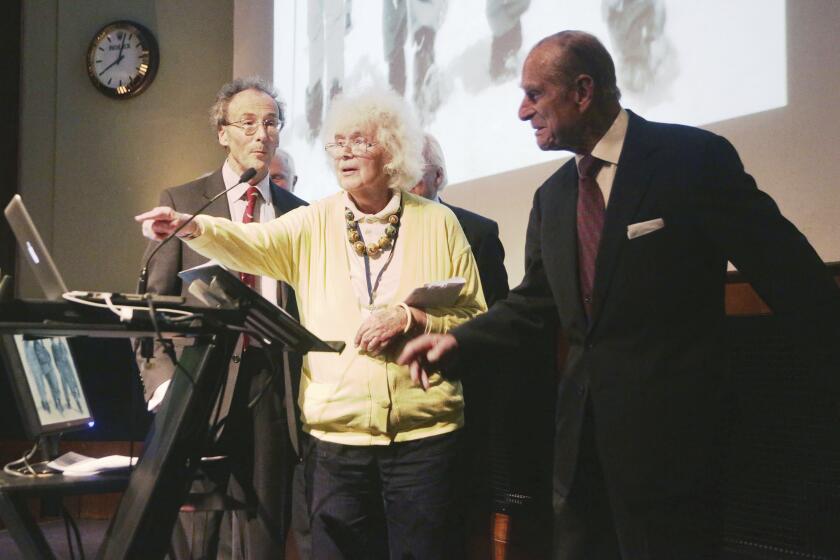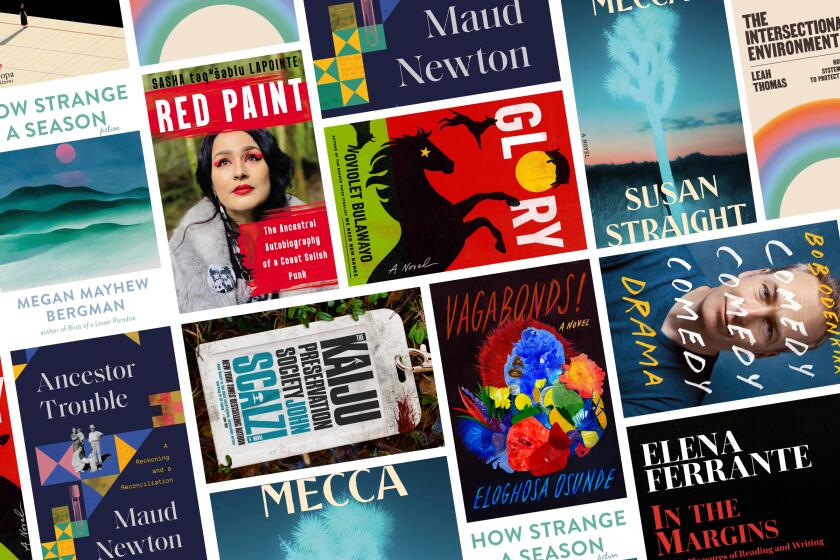A novelist of great range follows mismatched twins through Mongolia
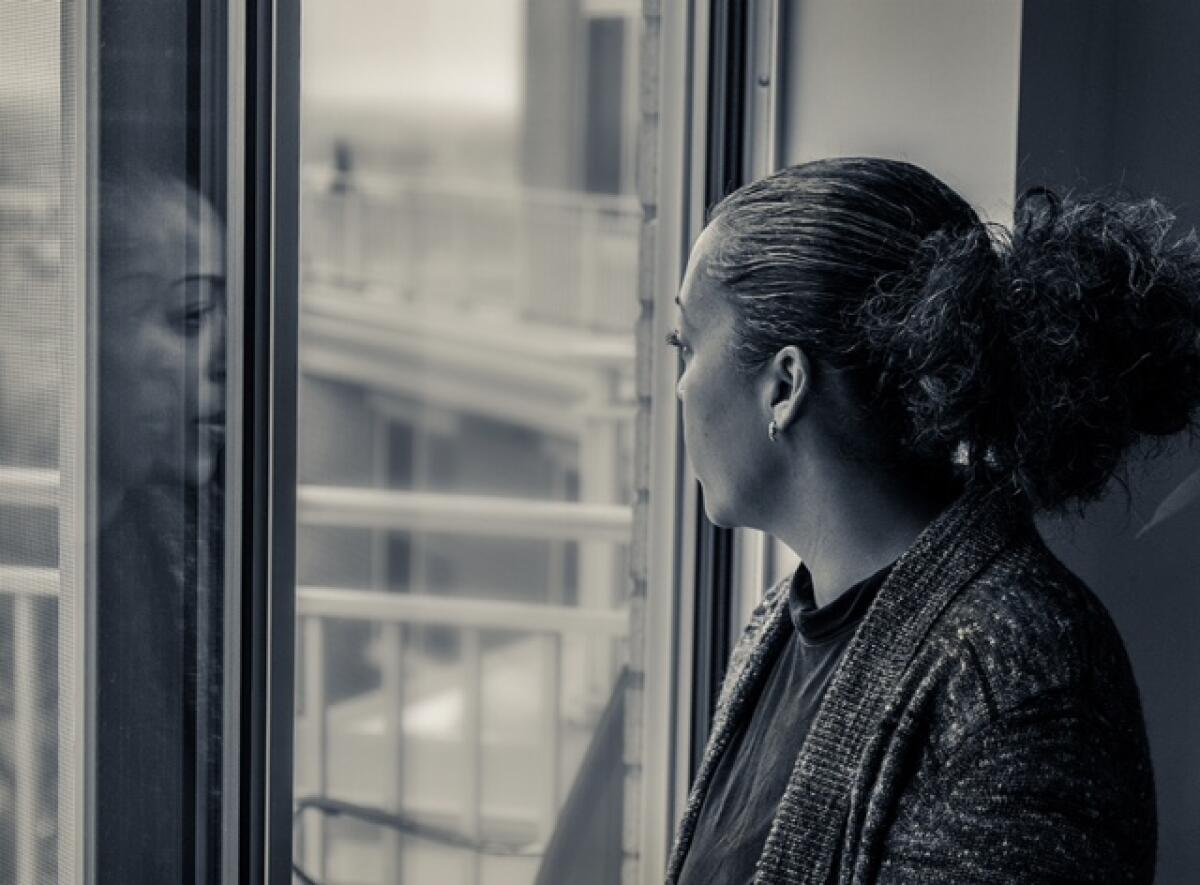
- Share via
On the Shelf
When I'm Gone, Look for Me in the East
By Quan Barry
Pantheon, 320 pages, $27
If you buy books linked on our site, The Times may earn a commission from Bookshop.org, whose fees support independent bookstores.
Nothing thrills me more than reading a new novel and finding it completely different from the author’s earlier work. While many novelists tend to circle the same terrain, those who change up everything, every time, are both exciting and frightening to watch: Will they stick a new landing?
Quan Barry’s “We Ride Upon Sticks” was one of the most justly lauded fiction titles of 2020, a wildly funny look at a girls’ high-school field-hockey team that summons dark magick to its fields. The irresistible romp through adolescence laid the groundwork for the television hit “Yellowjackets,” the estrogen haze as powerful in its own way as the testosterone funk in any male locker room.
Barry’s third novel, “When I’m Gone, Look for Me in the East,” has nothing to do with high-school athletics, the occult or even the United States. (Her first, “She Weeps Each Time You’re Born,” was set in Vietnam.) We begin this time in Mongolia, where Chuluun has become a novice monk. His identical twin, Mun, raised with him in a remote monastery, recently left their home, and we won’t learn why until later in the book, when Chuluun persuades Mun to chauffeur him on a road trip in search of a Buddhist teacher who has been reincarnated as a child.
Before considering the plot of “When I’m Gone,” we must consider the enormity of Mongolia. Sitting between Russia and China, it is smaller than both but so much larger than most other countries. There is also its astounding variety: steppes, mountains, desert. Chuluun and Mun spend hours together in a vehicle along with two fellow Gelug Buddhist monks, Uncle and Little Bat, and a woman, Saran, who acts as their servant.
Still more vast than the terrain is the chasm between the brothers. Chuluun hews to the tenets of his faith, including those that detail how and where its tulku, or sacred ones (for example, the Dalai Lama of Tibet), return to Earth. In the Gelug tradition, the tulku leave clues behind to help followers locate their new child selves. Chuluun and his fellow believers think the new Rinpoche will be somewhere “in the East.”
Unless we act now, we will sacrifice the future of humanity for the greed of the few.
It’s July 2015 when the brothers meet in Ulan Bator, where Mun, who is adamantly secular, inhabits a messy flat filled with the kind of wordly detritus Chuluun both covets and doesn’t understand. As they prepare for a day trip (Mun leads tours for Westerners), we also learn that the twins communicate through a kind of emotional ESP.
The course of Barry’s road-trip narrative is about as linear as the Buddhist path — which is to say, not at all. Barry starts the story with Chuluun traveling from his monastery to his brother’s apartment, then jumps back and forth in time to describe their lives, including a sojourn at the Naadam, a sort of Mongolian Olympics, and scenes from the boys’ childhood, which effectively ended when their beloved grandfather Övöö was given a traditional “sky burial” (involving hacking, vultures and bones ground to powder).
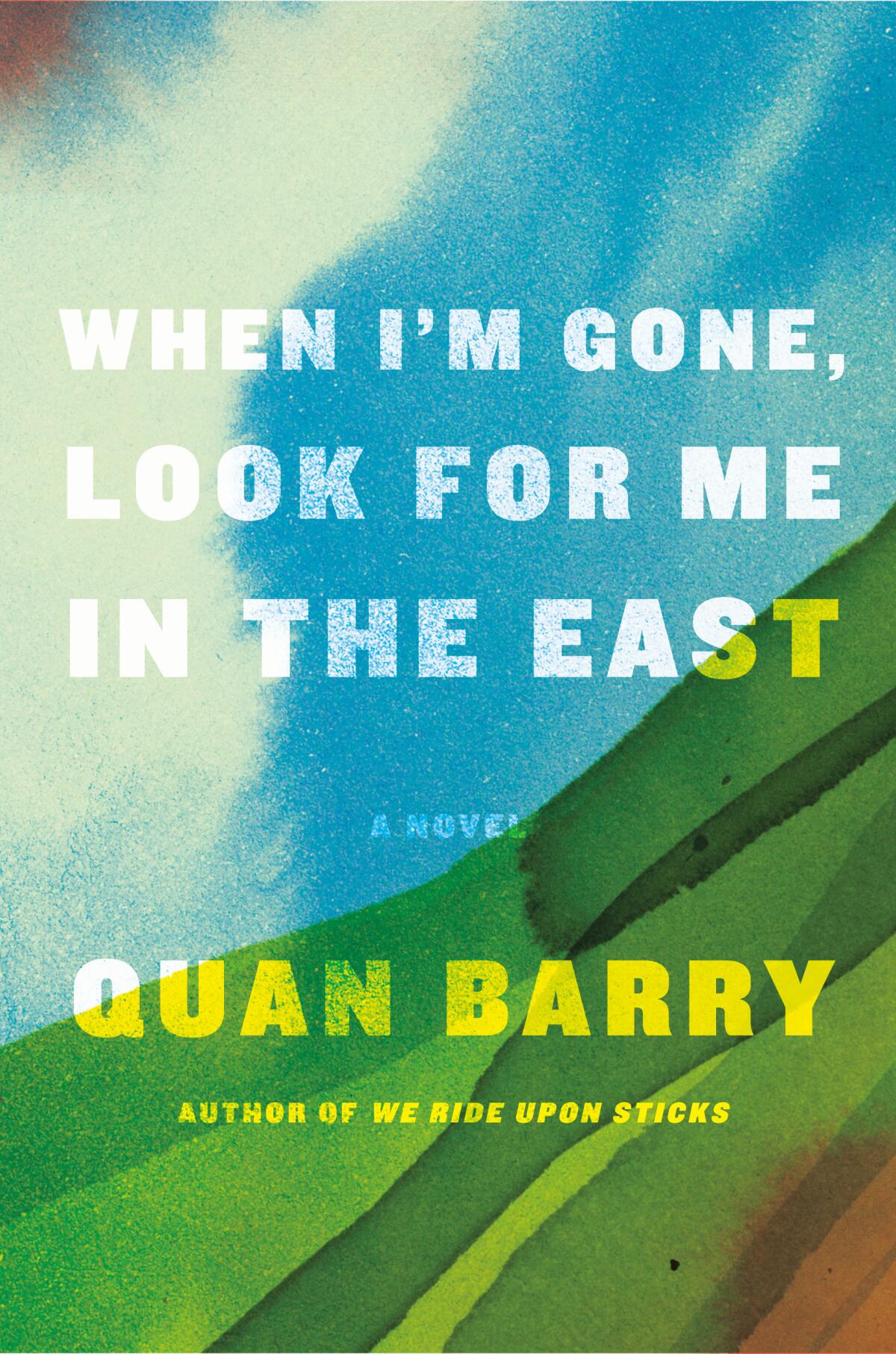
There’s much to savor in Barry’s descriptions of Buddhist scripture, rites and concepts. But if you’re looking for the writing found in “We Ride Upon Sticks,” you’ll be disappointed. Not to say that the sentences in “When I’m Gone” are not strong or beautiful — they are both. “Mun lights another cigarette off the end of the first one,” Chuluun tells us. “It’s unbelievable, he says, how after everything that happens, you still think being a reincarnation is a good thing.”
The satisfactions of narrative, on the other hand, are more elusive. As the story moves from the territory of the Reindeer People to the Western mountains, then back to the steppes and then over to the stark monastery, what began with the trappings of a novel turns into more of a travelogue. Barry, who visited Mongolia in 2008, imbues the book with all the wondrous detail of the best observational writers, from Jan Morris to Mary Morris. But the Morrises of literature find meaning through the act of travel; they’re not trying to extract meaning from a region’s particulars.
Jan Morris, the writer and transgender pioneer who died Friday, should also be remembered for her perceptive 1976 essay “Los Angeles: The Know-How City.”
Barry is most successful when she allows a scene to reveal Chuluun’s character, especially his ambivalence about the monastic life. He wonders about women and sex, all the more so because the first time Mun was with a woman he didn’t block Chuluun from his mind, allowing his twin to experience orgasm by proxy.
The author also excels when using the lens of Mongolia to illuminate global crosscurrents, such as Western misconceptions about Chinggis Khan (or Genghis Khan, as he’s commonly known), China’s religious suppression (a subtext of one of the book’s most moving sections) and the effects of immigration in a nation so sparsely populated that in many regions, reindeer outnumber humans.
For me, Barry sticks her landing in one specific place: when she describes a golden eagle coming to rest on the wrist of its trainer, Chala, “the only girl among the riders.”
“Chala doesn’t wear any of the traditional clothes of the eagle hunter,” Barry writes. “All she wears is the special leather glove. Despite its thickness, the bird can still crush her wrist, exerting almost three thousands kilopascals with its talons.” In that juxtaposition of a traditional sport and a startlingly new perspective, the author exposes overlooked places and history in a world where, against all odds, there is always something new under the desert sun.
Patrick is a freelance critic who tweets @TheBookMaven.
Bethanne Patrick’s March picks include works by Bob Odenkirk and Elena Ferrante, as well as an Indigenous punk memoir and magical African allegories.
More to Read
Sign up for our Book Club newsletter
Get the latest news, events and more from the Los Angeles Times Book Club, and help us get L.A. reading and talking.
You may occasionally receive promotional content from the Los Angeles Times.
